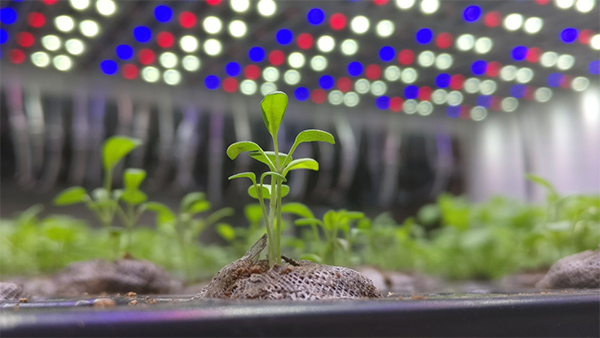Vitamin C content of rocket enhanced with LEDs
The GrowWise Research Center at Philips Lighting has produced arugula (or rocket salad) with seven times higher vitamin C content than the published USDA value of 15mg/100g. The vitamin C-rich arugula was grown in a trial in collaboration with the Dutch Wageningen University and Research, and Maastricht University, using a new growth recipe under Philips LED lighting in a vertical farming environment with no daylight.
The results of this trial have shown that it is possible to add functional ingredients to a food like arugula in a natural way by simply growing it differently. Retailers and growers can apply specific Philips light recipes using LED technologies to meet the growing demand for functional foods from health conscious consumers. Since vitamin C is one of the markers of shelf life, the higher vitamin C levels in the arugula at harvest may also help retailers extend the popular green's shelf life. In addition to vitamin C, other healthy compounds are shown to be influenced by the growth recipe.
“The results of this trial reveal that not only can we boost the yield of a crop, but we can also influence the taste and growth characteristics of a crop by changing the growth recipe. A Philips growth recipe provides parameters for growing a crop that include the light level, spectrum, intensity, required uniformity, position and time, as well as climate conditions like temperature, humidity, CO2 levels and nutrition,” said Udo van Slooten, Managing Director for Philips Lighting Horticulture LED Solutions. “This achievement confirms the tangible benefits that our research at Philips GrowWise Center is delivering for growers and retailers as they look to meet specific consumer needs like optimised smell, taste and flavour to differentiate themselves in their markets.”

Light influences nitrate level
The arugula grown under the LED lighting with the new Philips growth recipe showed a very low nitrate level while having a high yield. Lower nitrate levels also have higher sugar levels and a milder taste. The leaves grown under the LED lighting scored between five and eight on the Brix index, which correlates with a higher perception of sweetness in sensory tastes.
The low nitrate levels achieved in this trial are considerably lower than those set by the EU, which range from 7,000mg/kg to 6,000mg/kg). This low nitrate arugula would help retailers in Poland, Russia and Finland to meet the growing demand for low nitrate foods from consumers in these countries. By using another growth recipe, it is also possible to grow a high vitamin C arugula with a high nitrate content for consumers willing to use high rich nitrate content as a health benefit without affecting the production of other nutritious compounds.
The trial was undertaken at the Philips GrowWise Center in Eindhoven, the largest vertical farming research facility of its kind, in cooperation with Wageningen University and Research for plant science and shelf life, and Maastricht University on Health Food innovation, both in the Netherlands. The arugula crop was tested in four different lighting situations with three different LED lighting combinations and one artificial light source that mimicked the sun and/or HPS lighting. The effects of high blue and high far red wavelengths were also studied to determine their impact on shelf life and nutrient content of the harvested greens.





